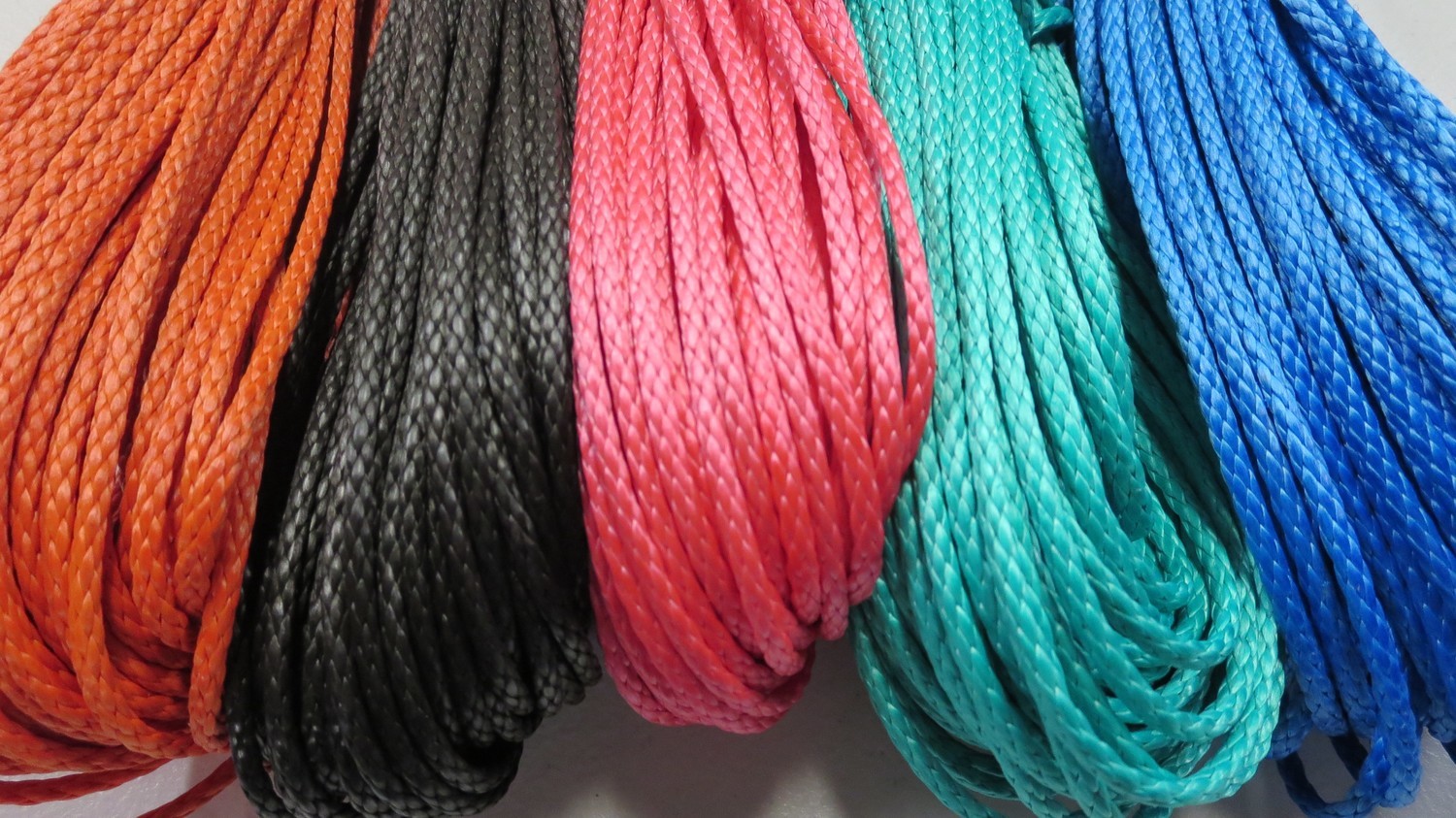
Suspension Options
What Is Hammock Suspension?
As the name implies, a hammock's suspension is the way in which it is suspended off the ground. We use incredibly strong and durable 7/64" AmSteel with a weight rating of around 1,600lbs. This is a great material for hammock suspension, since it is so strong while also being light-weight. We splice all of our suspension by hand in our workshop.
All of our suspension options are designed to work with our 1" polyester tree straps, which protect the trees from being damaged by the thin AmSteel rope. Please always use tree straps, bearing all the weight of you and your hammock without distributing the load across tree straps can damage or kill trees.
In essence, our hammock suspension options are different ways in which you can connect your hammock to the tree straps. We offer three different types of suspension, all with their own strengths and weaknesses.
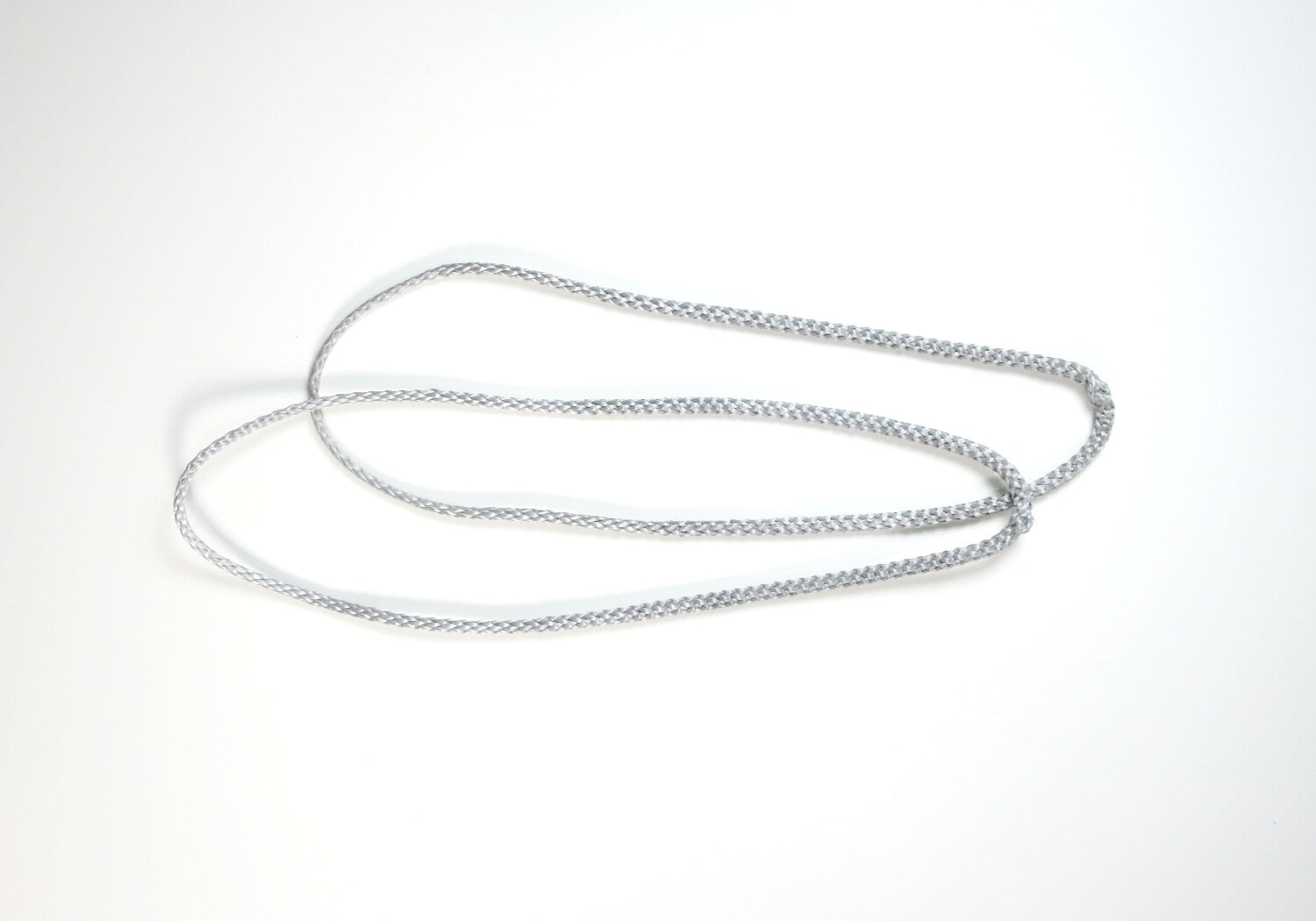
Continuous Loops
These loops are nothing more then a set of loops that stick out of the hammock. They can be fixed directly to your tree straps with a Marlin Spike Hitch (see slideshow below), or used with carabiners or other hardware.
-
Pros:
- Very light-weight
- Small and compact
- Inexpensive
-
Cons:
- Require either knot tying or additional hardware
- More difficult to adjust than other options
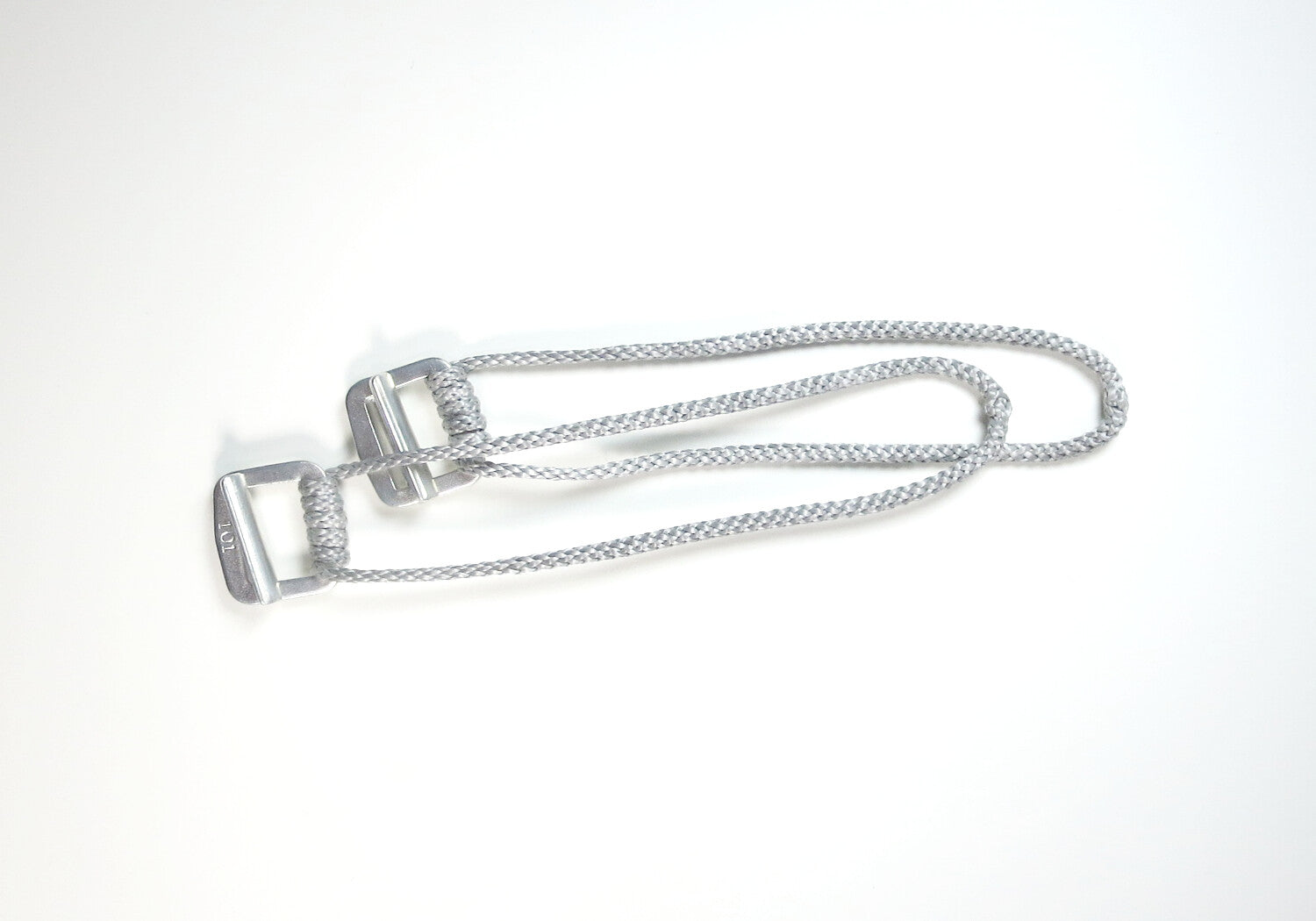
Cinch Buckles
If you can use a belt buckle, you can use our Cinch Buckles. They are similar to our continuous loops, but they have a simple two piece stainless steel buckle spliced on the end. We highly recommend them due to their simplicity.
When we splice our buckles we make several wraps at the base of the buckle to help prevent them from twisting or getting misaligned.
-
Pros:
- Very easy to operate (no knots required)
- Quick setup and tear-down
- Very easy to adjust
- Durable
-
Cons:
- Heavier than our other options

Whoopie Slings
Whoopies are a neat type of suspension. They work similarly to those old Chinese finger traps; the harder you pull, the tighter they get. But with only a little bit of pressure, the rope relaxes and you adjust it easily. The adjustable range of our Whoopie Sling is from as long as 6 feet, to as short as 10 inches.
-
Pros:
- Easy to adjust
- Light-weight
-
Cons:
- Require either knot tying or additional hardware
- Can get tangled if not packed properly
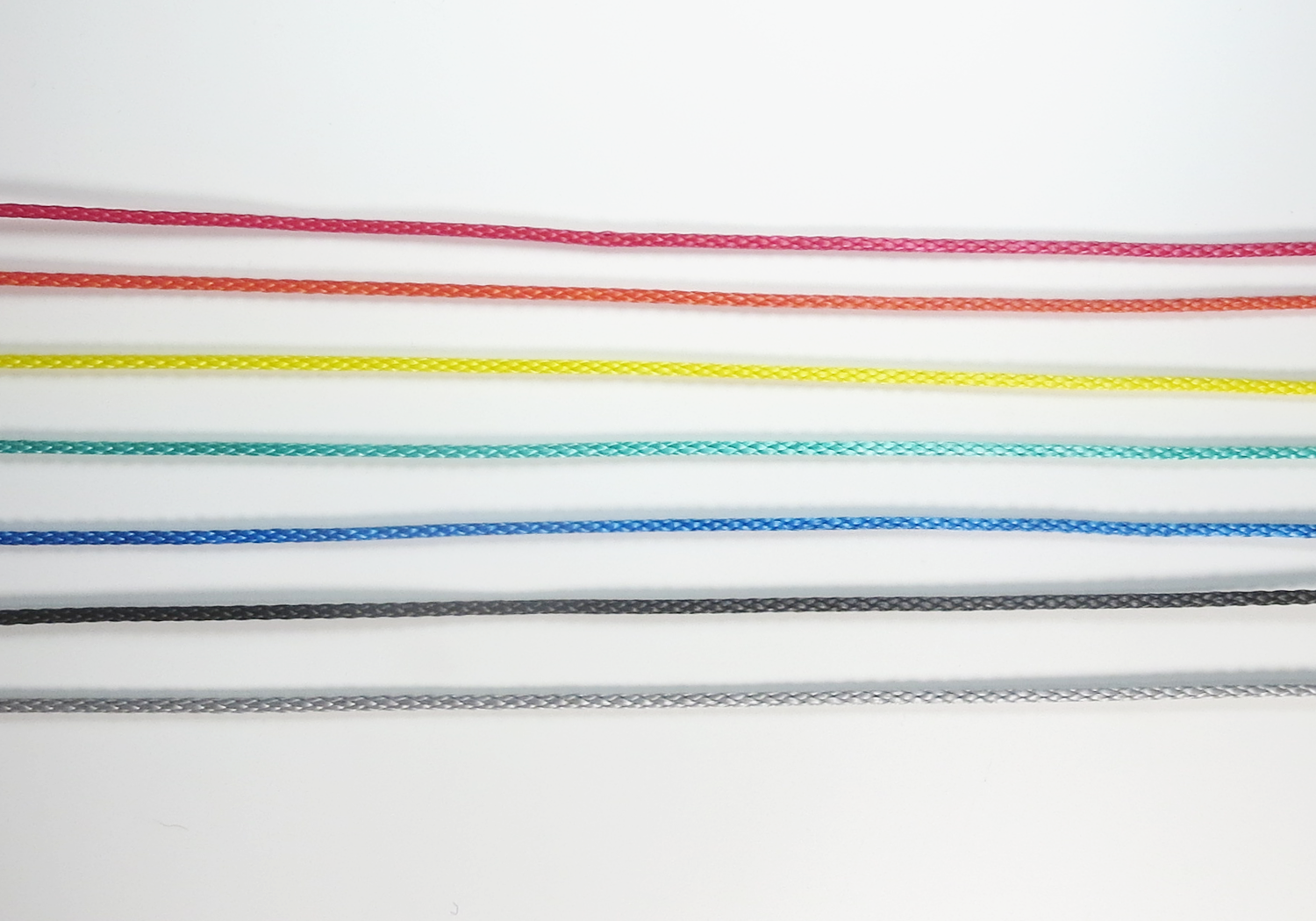
AmSteel Colors
All of our AmSteel can be customized to match or accent your hammock! In addition to our standard silver, we are able to make your hammock's suspension red, orange, yellow, seafoam green, blue, and black. You can even choose different colors for each end!
Operating your suspension
Now that you know about the different suspension options we offer, how do you actually use each of them?
Cinch Buckles
Cinch buckles are without question the easiest suspension to operate and adjust. To attach them to your tree straps, simply feed the end of the strap through the buckle below the center piece, then feed it back out, going around the other side of the center piece.
From there, when you pull on your suspension the buckle shouldn't move. Adjusting the suspension is as easy as turning the buckle upward 90 degrees so the center piece isn't locking the strap in place. Once you're happy with where you're suspension is we recommend tying a simple knot to make sure that in the unlikely event that your buckles slip, they can't slip far.
Continuous Loops and Whoopie Slings
These suspensions are very light weight, but require a little bit of knot tying to set your hammock up. Don't worry though, it's very easy to get the hang of.
Once your tree straps are in place, simply tie a marlin spike hitch (see slideshow below for instructions). You can simply loop the end of your Continuous Loop or Whoopie Sling around the knot. Tying this knot requires a toggle, something to hold the knot in place. Some people will use tent stakes, carabiners, or some kind of dedicated toggle specifically to be used for this, but I usually just find a stick about the size of my finger. Remember, always hang on the knot, not the toggle (see picture below). This will make sure the force applied to the toggle will squeeze it, not snap it.
Once tied, you will need to adjust your hammock to the correct height. Whoopie Slings make this very easy. Simply pull on the cord to get it to a good angle, and adjust as necessary. Continuous Loops take a little more effort, as you will need to retie the marlin spike hitch every time you need to adjust your suspension up or down.
To untie the marlin spike hitch, just pull the toggle out and the whole thing will release.
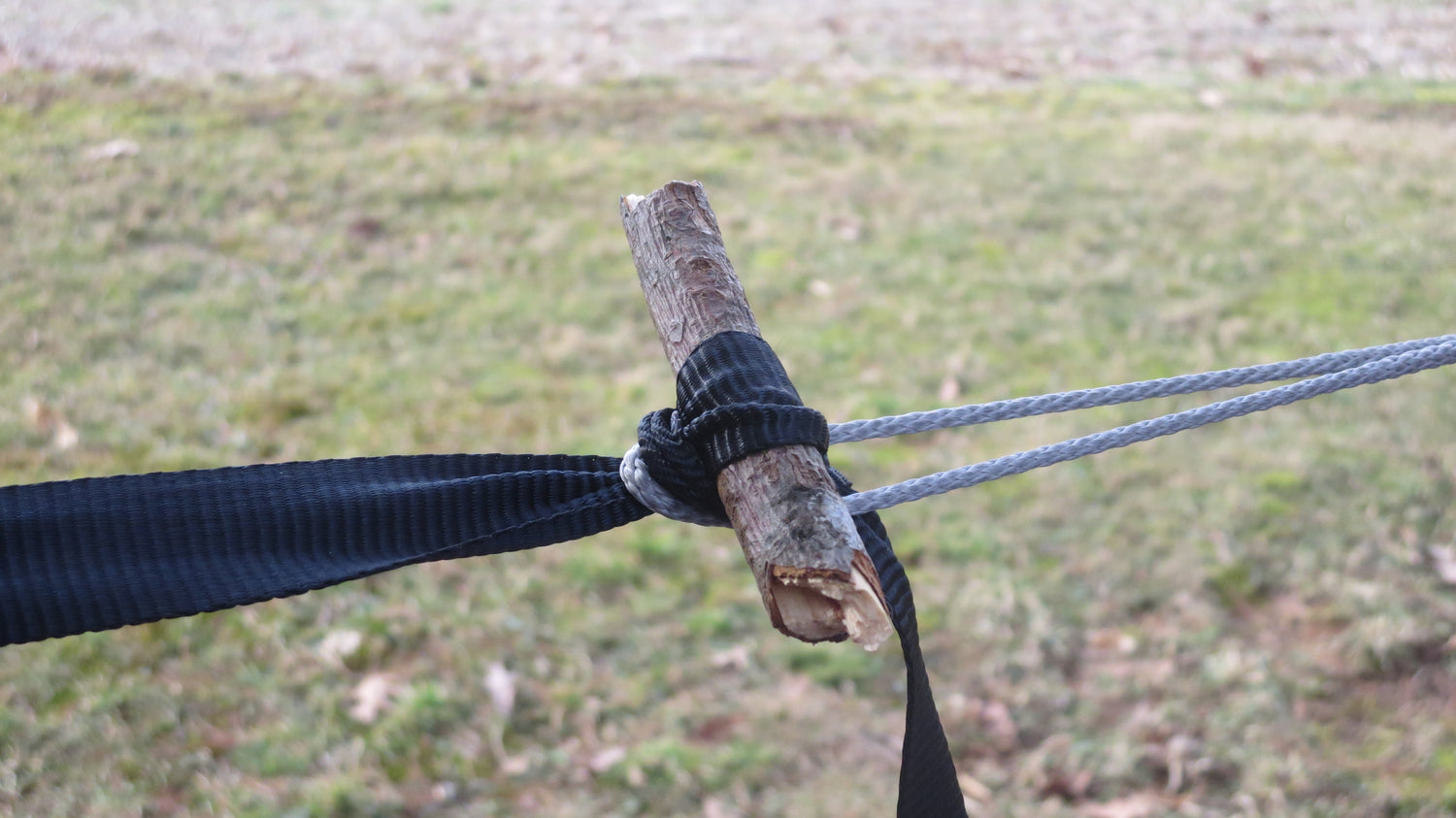
How to Tie a Marlin Spike Hitch
The marlin spike hitch is arguably the easiest and quickest way to put tie toggle in your tree straps to hang your Continuous Loop or Whoopie Sling suspension from. These pictures will show you how to tie it!
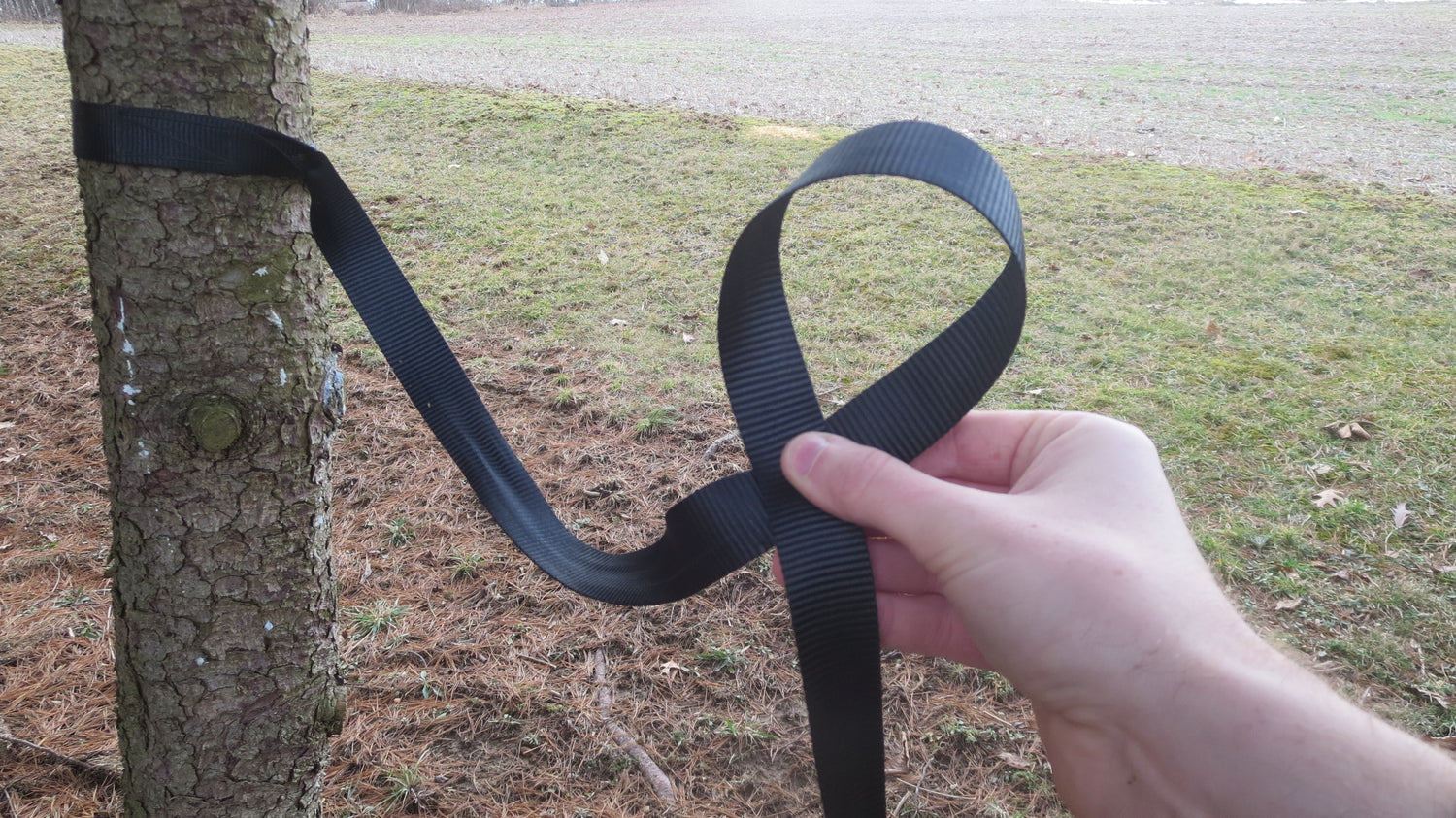
Step One
Make a loop
After setting up your tree straps on the tree, start by making a simple loop in your tree strap.
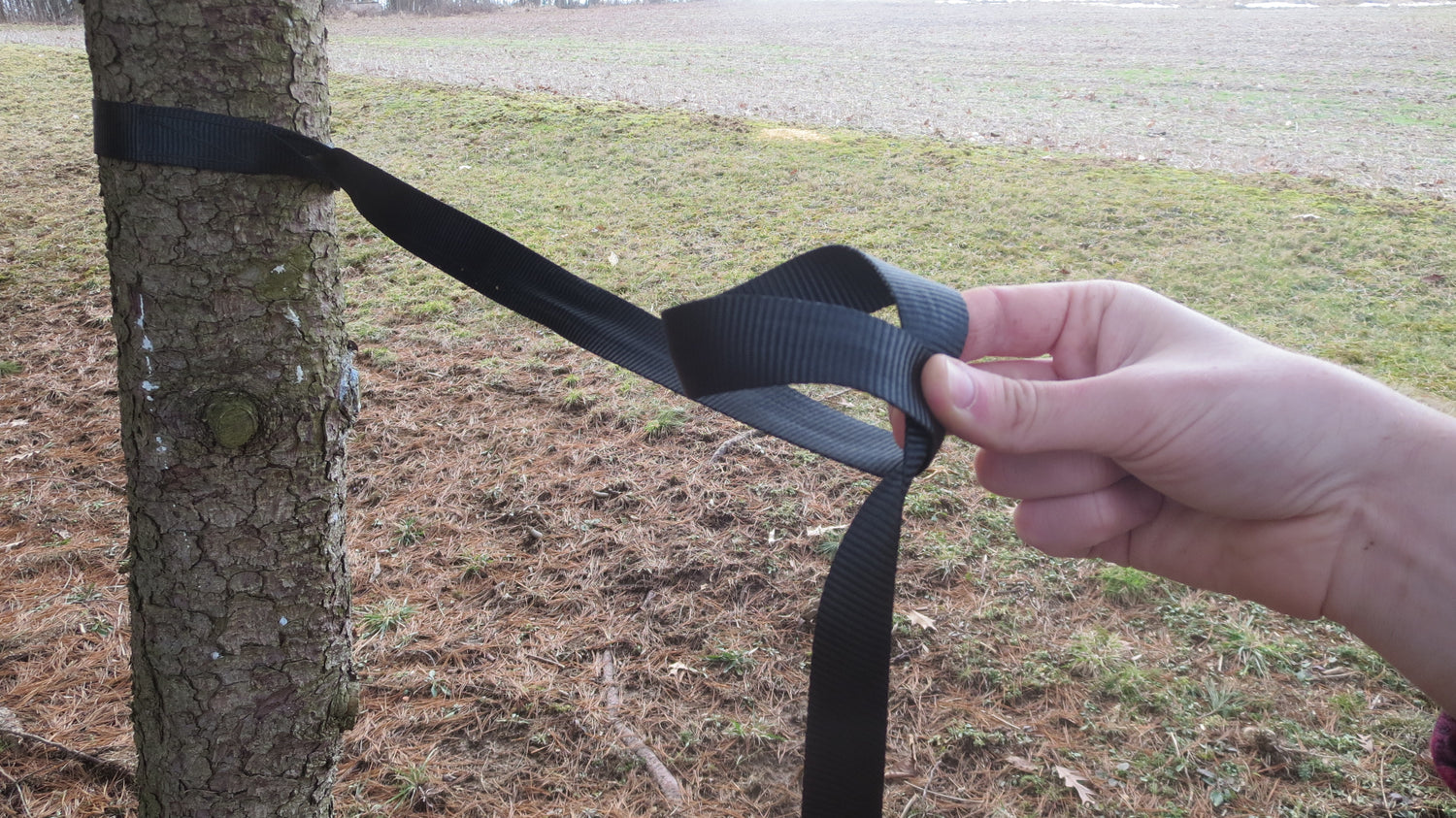
Step Two
Point the loop towards the tree
I wouldn't usually consider this a step on its own, but the picture will help you visualize the next step.
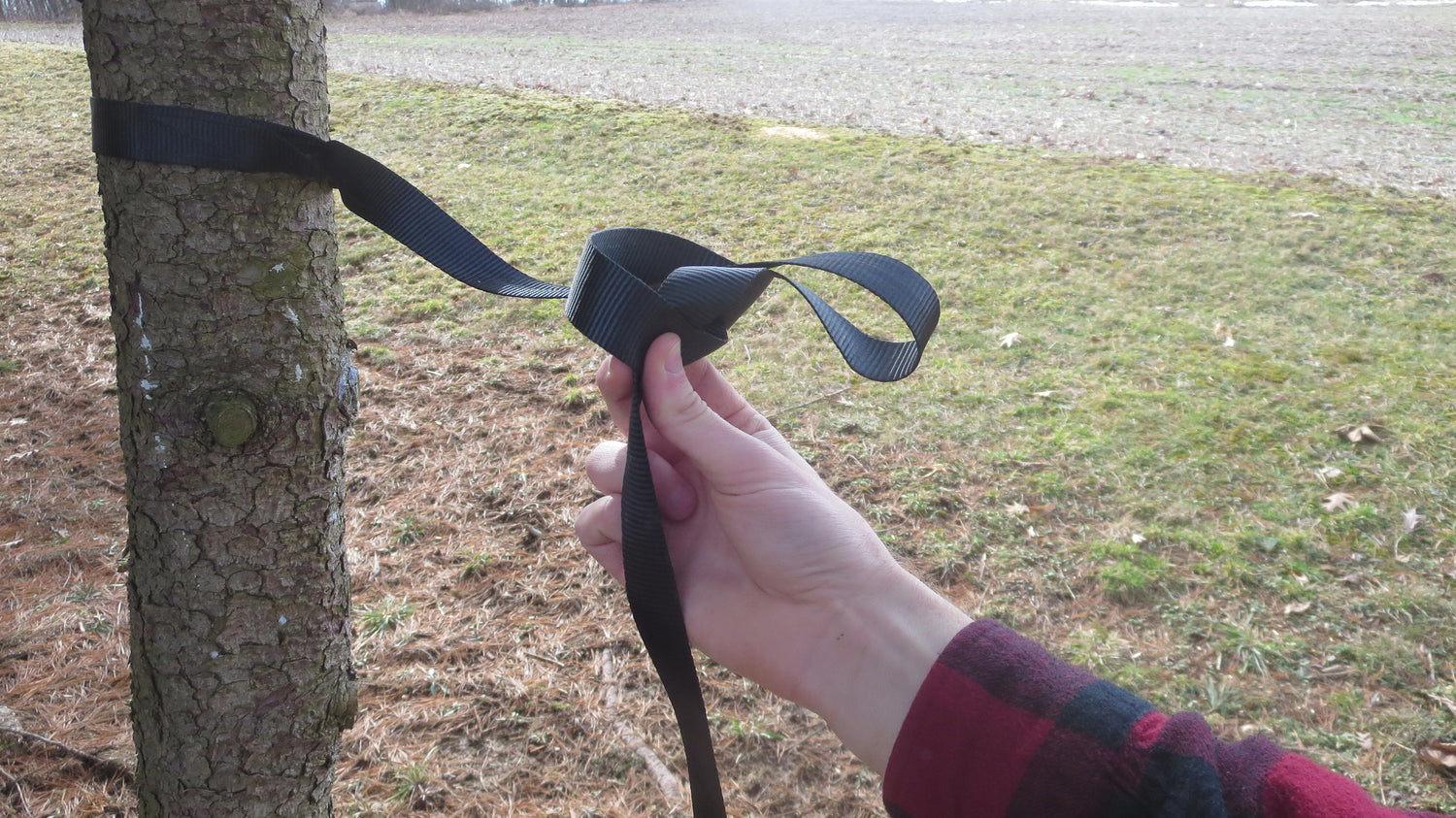
Step Three
Pull the strap through the loop
Form another loop by pulling some of the upper section of the strap through your first loop.

Step Four
Put your toggle in place
Place your toggle in the loop created in step three. You can use a dedicated toggle, or just a stick the size of your finger.
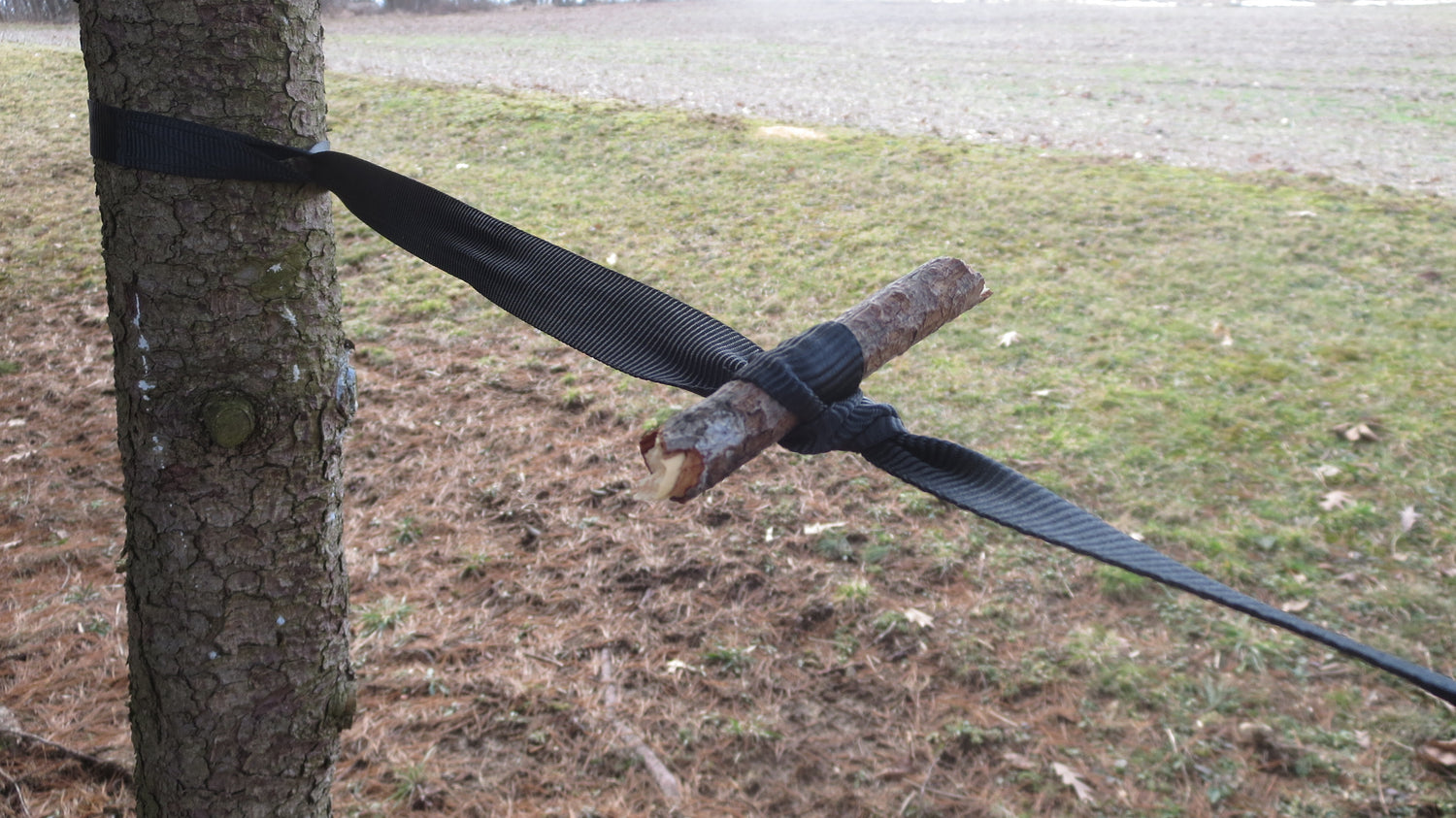
Step Five
Pull it tight
With everything in place, simply pull on the bottom section of the strap to tighten up the knot. The toggle should be held firmly by the knot.

Step Six
Hang your hammock
Lastly, place your hammock's suspension over the knot you just tied, not the toggle. Placing it over the knot will simply compress the knot, rather than put stress on the toggle. (see picture below)
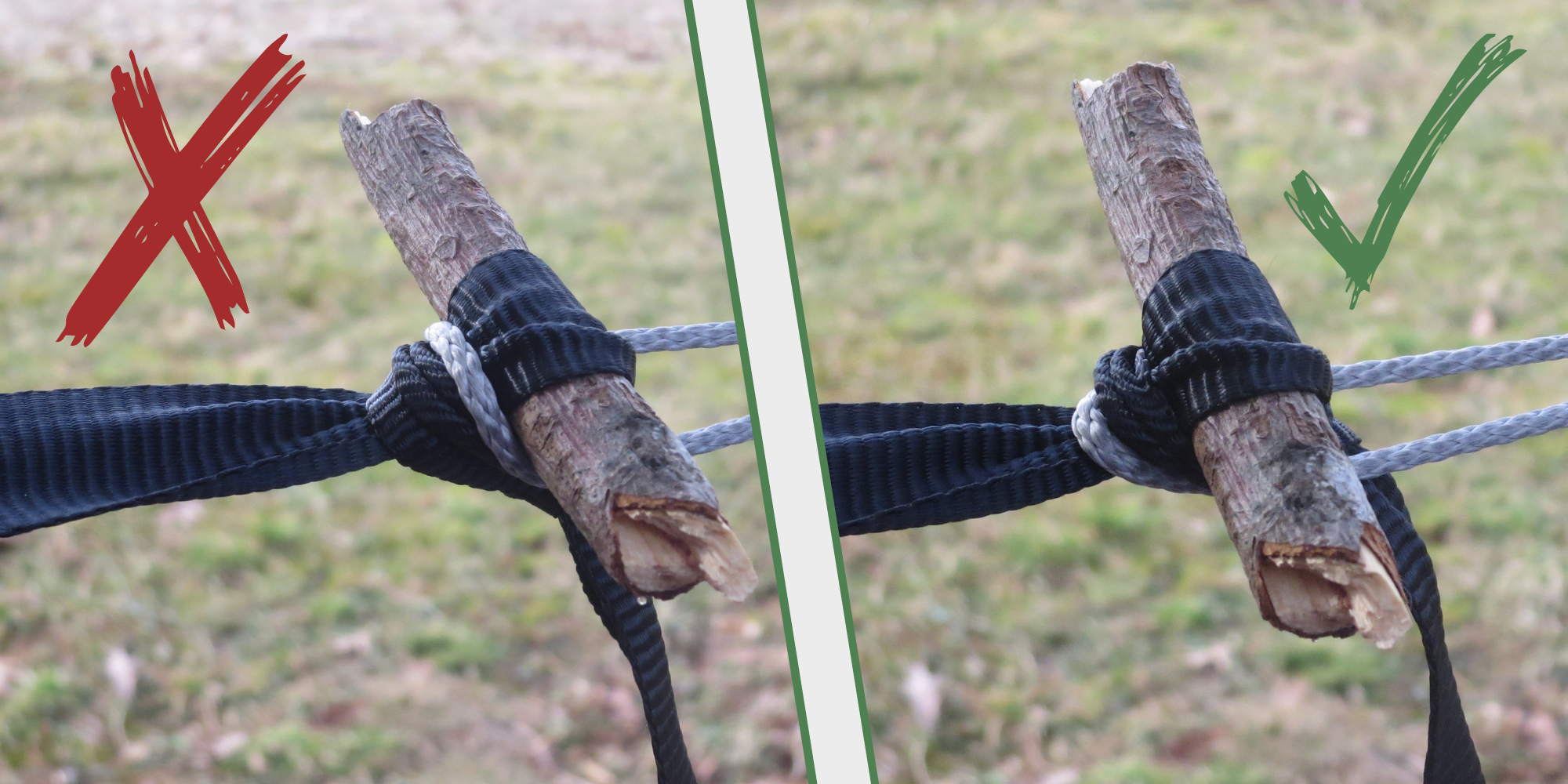
Hang on the knot, not the toggle!
How to swap out a hammock's suspension

Tree Straps
All hammocks will require tree straps. But which ones? We have a few different lengths and materials to choose from.
Length:
- 10 foot: For the vast majority of hangers, 10 foot straps will work just fine.
- 15 foot: For those who will be hanging in places with huge trees, the extra length ensures that you'll have enough strap to hang your hammock from
Material:
- 1" Standard: With a breaking strength of 1,500 lbs, these are plenty strong and our choice for 90% of our straps.
- 1" Camo: The same material as our standard, but in a woodland camo pattern.
- 1" Heavy Duty: While increasing the breaking strength of your straps to 3,000 lbs may seem unnecessary, the increased durability is noteworthy if you hang a lot.
- 2" Heavy Duty: With a breaking strength of 6,000 lbs, you're never going to break these! The primary purpose of 2" straps is to satisfy laws that require all tree straps to be at least 2" wide, like in Texas and Florida. 2" straps to not work with our 1" Cinch Buckles
Loops:
- One End: This is our standard, and we recommend it for most people.
- Both Ends: Some hardware requires another loop on the strap, and this satisfies that need.
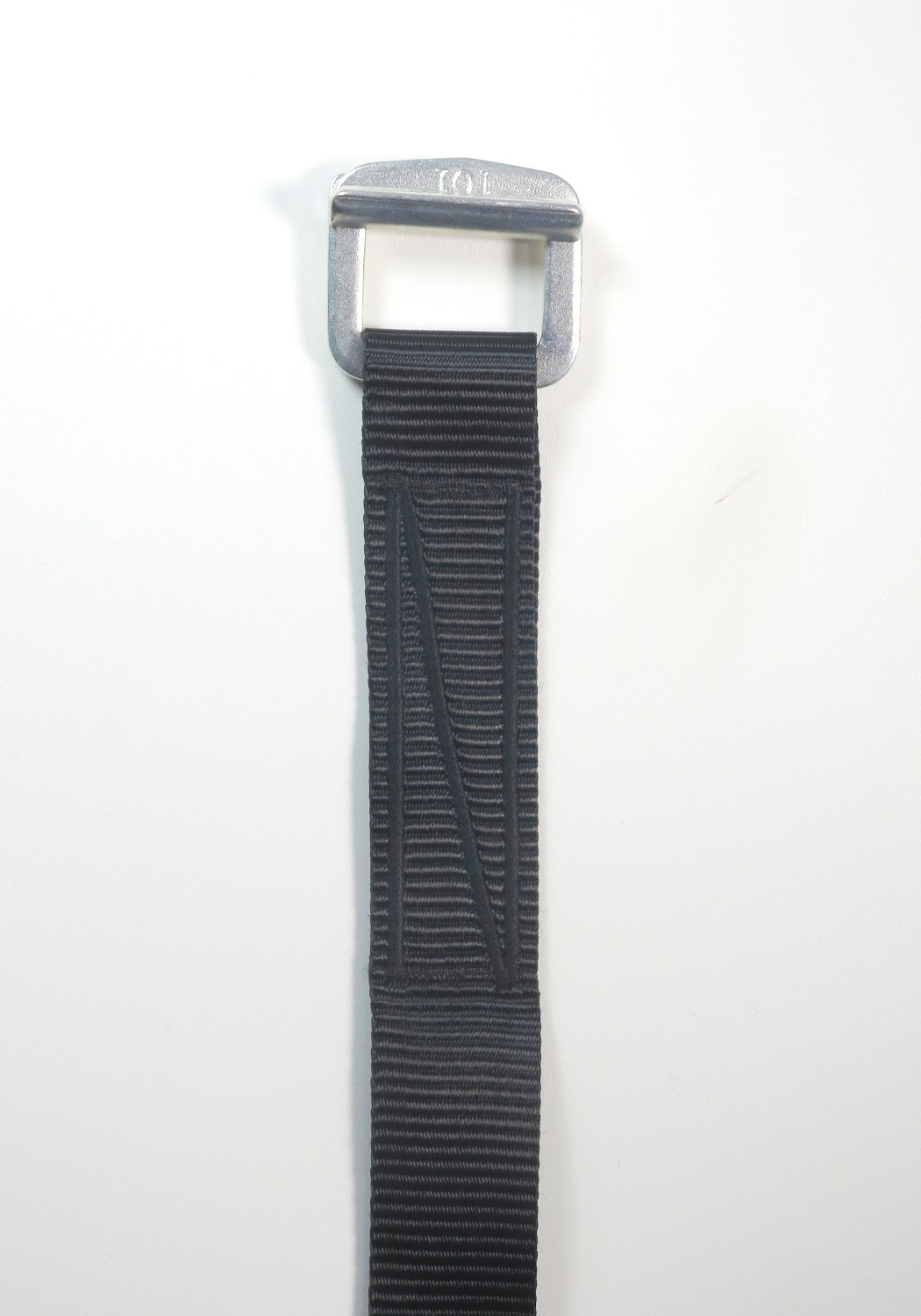
Cinch Belt
This is a 48" belt made from our standard 1" strap material with one of our 1" cinch buckles sewn to the end. In the event you need a few extra feet of strap, you can fix the buckle onto the end of your strap to lengthen it.
It's also pretty good at keeping your pants above your knees!
Frequently Asked Questions
-
Can I swap out my hammock suspension?
VideoSure! its pretty easy to do so. Click the link below to see some of our videos that show how to install a new set of suspension.
-
Can I add buckles to the Continuous Loops that are already on my hammock?
Yes, you can, but be mindful of their alignment. Our Cinch Buckles are spliced into their loops, which help prevent them from getting misaligned. If you simply larks head the buckles onto your existing Continuous Loops, you will have perfectly functional buckles, but keep a close eye on them, because a crooked buckle can damage or tear your tree straps!
